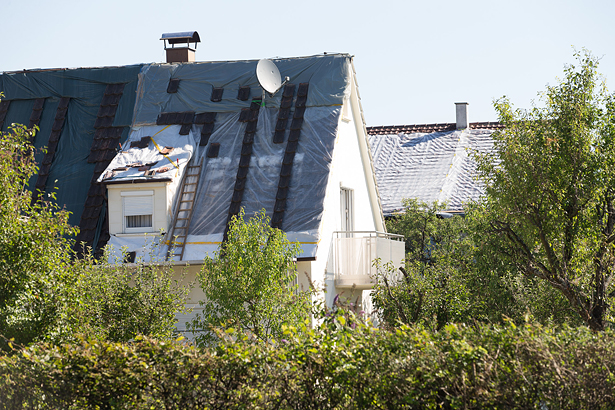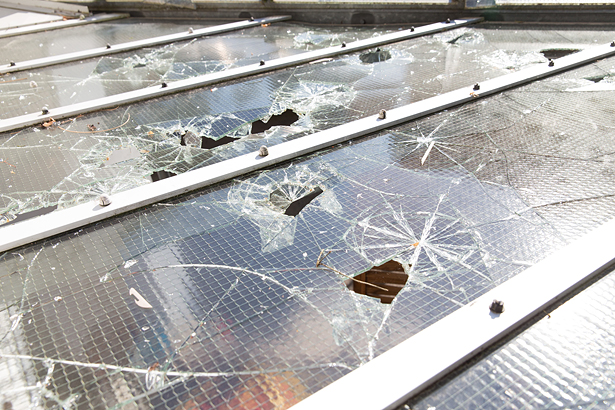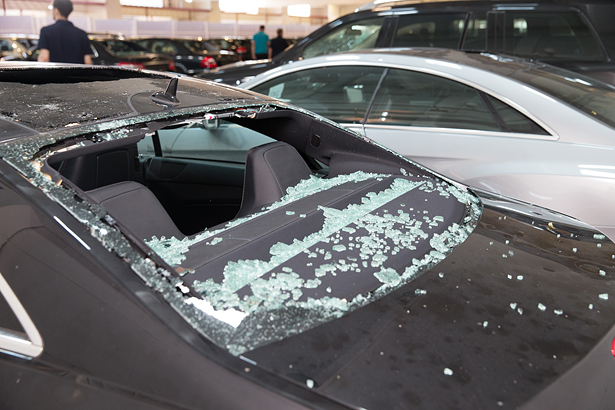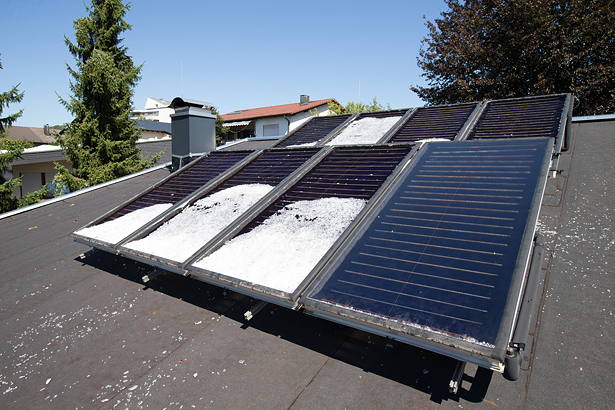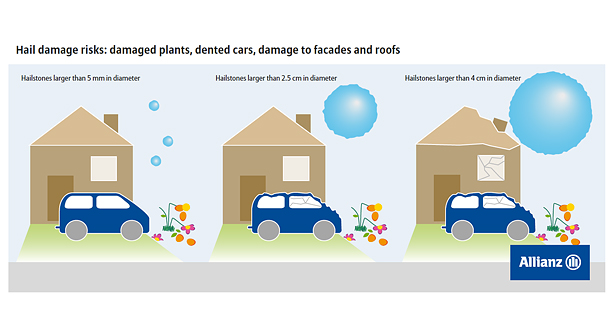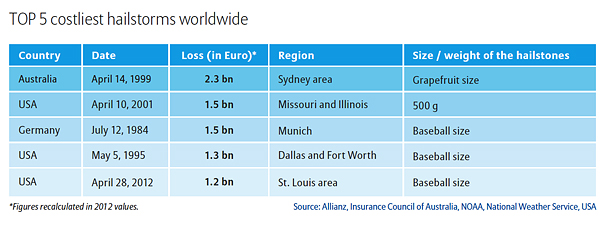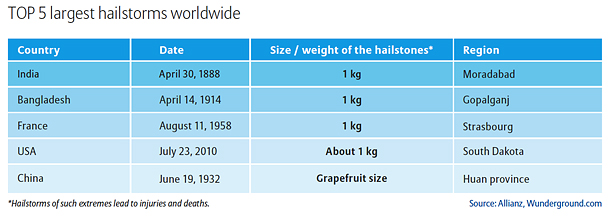A refreshing summer rain, a menacing thunder storm or a full-blown hailstorm – even the weather experts can only make an educated guess at what that particular cloud in the sky really has in store. They do, however, agree that severe rain storms and the damage they cause are on the increase – particularly in regions that are already at risk. When looking back at the end of the summer, the newspapers will report on "results battered by hail" if the season was a severe one. Some precautionary measures can, however, help to minimize hail damage.
"It goes without saying that we are pleased about every natural catastrophe that does not happen," says Clement B. Booth, Member of the Board of Management at Allianz SE. "We are very interested in good preventative measures and provide our customers with corresponding advice. However, when a storm does happen, we are there for our customers - as an insurer, that's quite simply our job."
Hail forecasts not easy, but not impossible
Radar forecasts can provide hour-by-hour images of thunderstorm cells forming and can generate storm warnings. The strength of the radar signal depends on the volume and form of precipitation – strong signals suggest that hail is on its way.
"Hail usually comes hand-in-hand with a violent thunderstorm," says Dr. Markus Stowasser, meteorologist and climate expert at Allianz SE Reinsurance. "But even when using modern forecasting methods, hail forecasting still bears considerable uncertainties."
Paying attention to storm warnings can determine whether you are hit by a hailstorm “out of the blue” or whether you know at least a few hours beforehand that a hailstorm might, or might not, be on its way.
Hailstones measure at least 5 mm in diameter – smaller stones are sometimes called ice pellets. Hailstones with a diameter of 2.5 cm or more can leave small dents in the bodywork of cars, or damage in roof tiles or house facades (see graphic below). In extreme cases, hailstones can be the size of tennis balls, baseballs or grapefruits. Despite these comparisons, hailstones are not round and smooth, instead these chunks of ice have a rough crystal-like structure.
The main hail season in Europe, for example, is the summer: most hailstorms happen between May and September. They can also occur at other times of the year, but these storms then tend to be less heavy.
